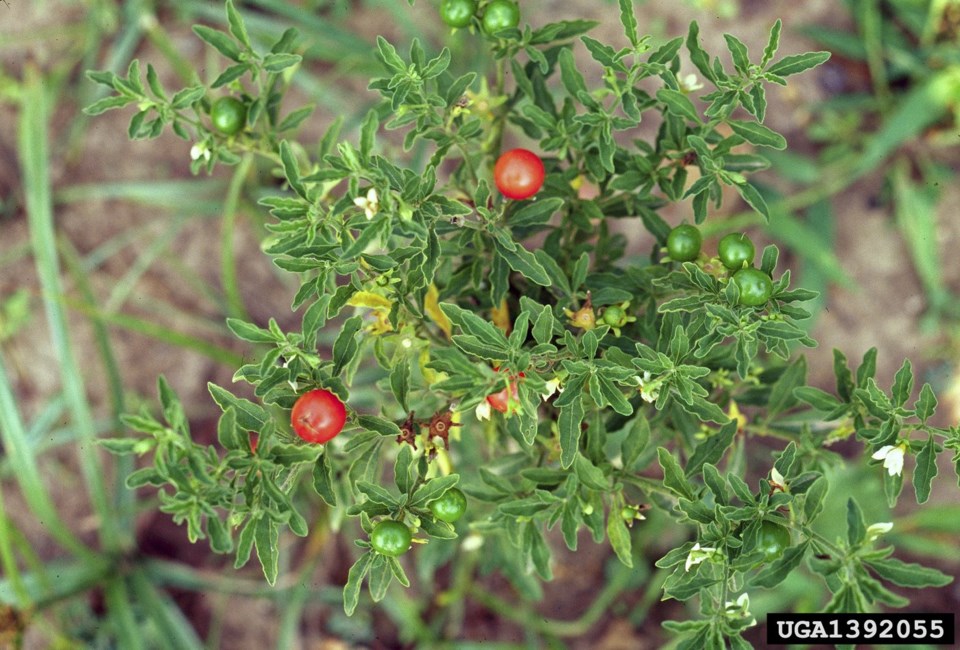Alicia Silverstone worried fans this week when she posted a TikTok clip of herself nibbling a poisonous berry she found along a sidewalk on a trip to England. The “Clueless” actor said she thought the fruit might have been a tomato, but realized it wasn’t after a couple bites revealed an off-tasting, peppery flavor.
That tomato lookalike seems to have been a Jerusalem cherry (Solanum pseudocapsicum), which, along with actual tomatoes, eggplants, peppers, potatoes and tomatillos, is a member of the Solanaceae, or nightshade, family. Although the fruits (and potato tuber) of those crops are safe to eat, their foliage can be toxic.
If you aren’t 100% sure that something is food, please don’t put it into your mouth.
About those Jerusalem cherries...
All parts of Jerusalem cherry, which is sold as a houseplant, are poisonous not only to humans but also to dogs, cats and horses, according to the American Society for the Prevention of Cruelty to Animals. The plant’s unripe berries can be especially dangerous, causing central nervous system and gastrointestinal symptoms, including delirium, abdominal pain, fever, vomiting, paralysis and more.
Consuming large amounts can be fatal. Silverstone was lucky because, she says, she didn’t swallow the berries, and also perhaps because the berries were reddish-orange, which indicates they were ripe.
Other toxic lookalikes
The poisonous Carolina horsenettle (Solanum carolinense) fruit also resembles tomatoes. Its common name, devil’s potato, is a dead giveaway.
Other members of the nightshade family are poisonous to varying degrees. The aptly named deadly nightshade (Atropa belladonna), for instance, is so toxic it was used as a murder weapon during the Middle Ages. Its berries, however, could be mistaken for blueberries. Pokeweed and Virginia creeper fruits also resemble blueberries, and both can be fatal if ingested.
Lilies, which are toxic, have an uncanny resemblance to edible onion and garlic grasses, especially when they first emerge.
Those edible wild onion and garlic grasses, which sprout in lawns and uncultivated areas in spring, have other toxic lookalikes, too, including death camas (Toxicoscordion nuttallii), a common cause of livestock poisoning that is dangerous for humans, too.
Sinister carrot and parsley lookalikes can also get you into trouble. Merely touching wild parsnip (Pastinaca sativa), which has carrot-type flowers and parsley-ish leaves, can cause photodermatitis, a blistering sun sensitivity that can last a year. And eating poison hemlock (Conium maculatum), which looks similar but is much larger, can lead to respiratory failure.
Creeping buttercup, an invasive, perennial weed that closely resembles flat-leaf parsley, can cause severe abdominal pain, vomiting, diarrhea, irregular heartbeat and more.
And the deadly Canadian moonseed (Menispermum canadense) can be confused with wild grape (Vitis spp.). Because its taste is so bitter, however, you’d likely spit it out, which is a good thing since ingestion can lead to convulsions and death.
Who to call
If you think you’ve swallowed a toxic plant by mistake, contact a poison control center at or 1-800-222-1222.
___
Jessica Damiano writes weekly gardening columns for the AP and publishes the award-winning . You can for weekly gardening tips and advice.
___
For more AP gardening stories, go to .
Jessica Damiano, The Associated Press



